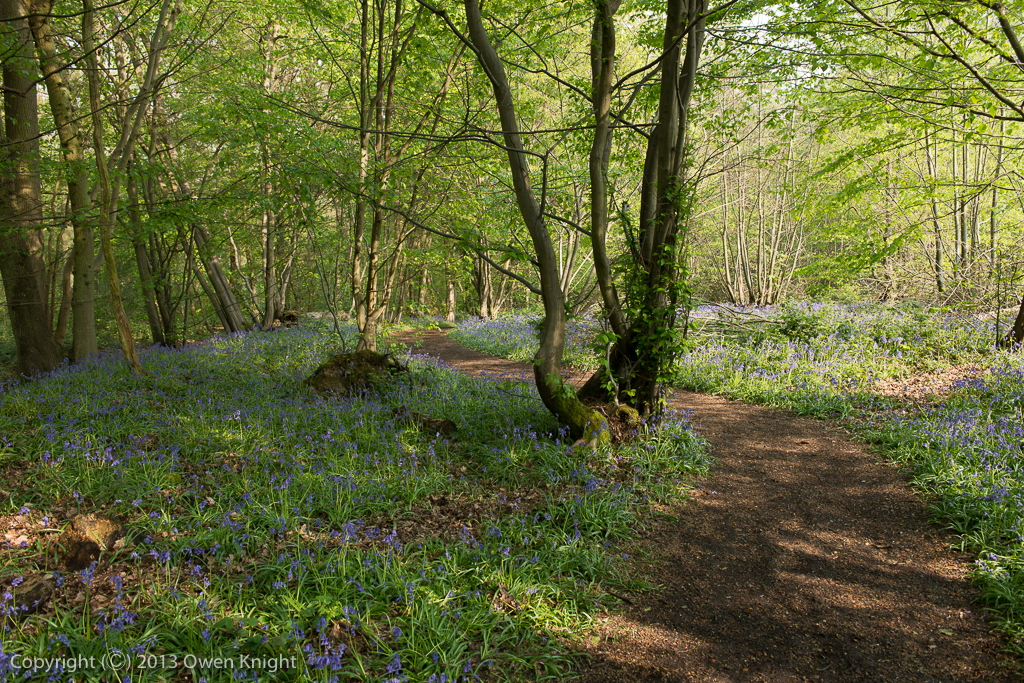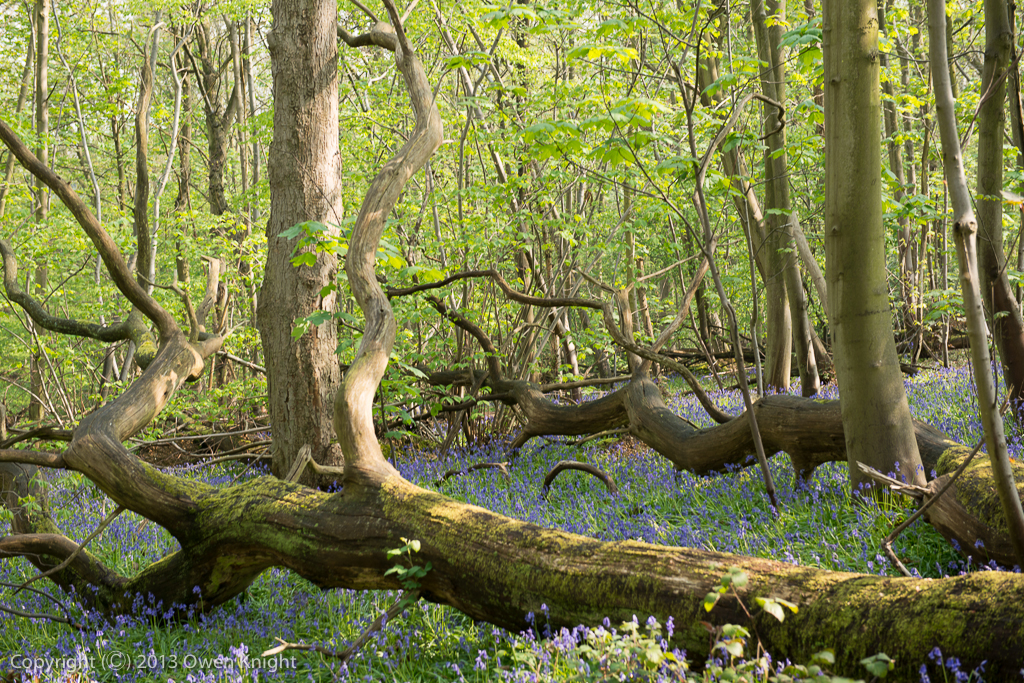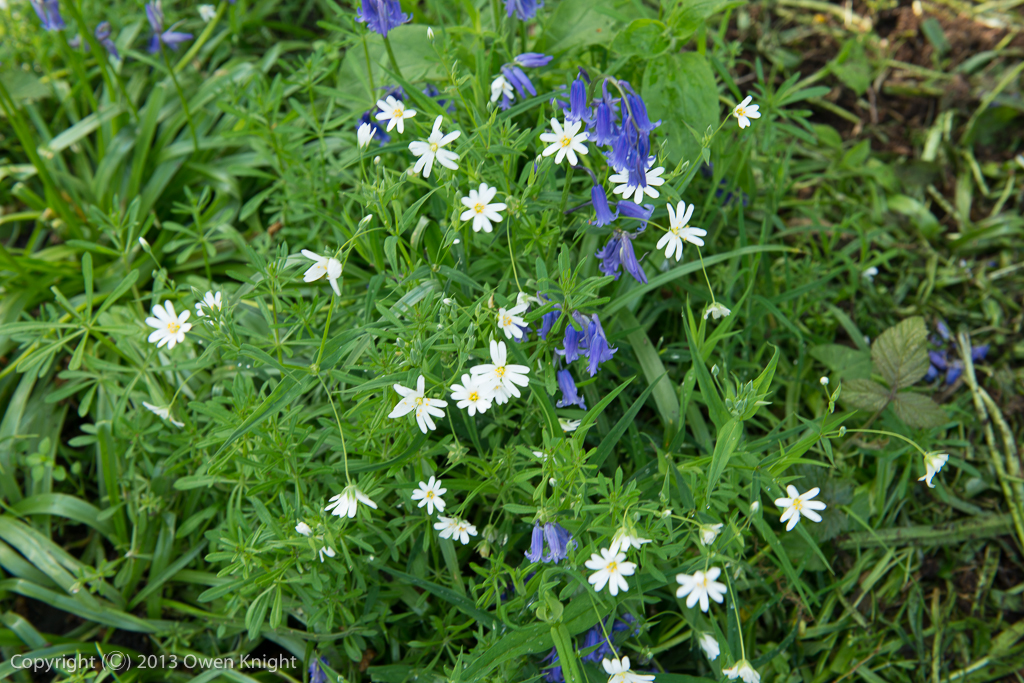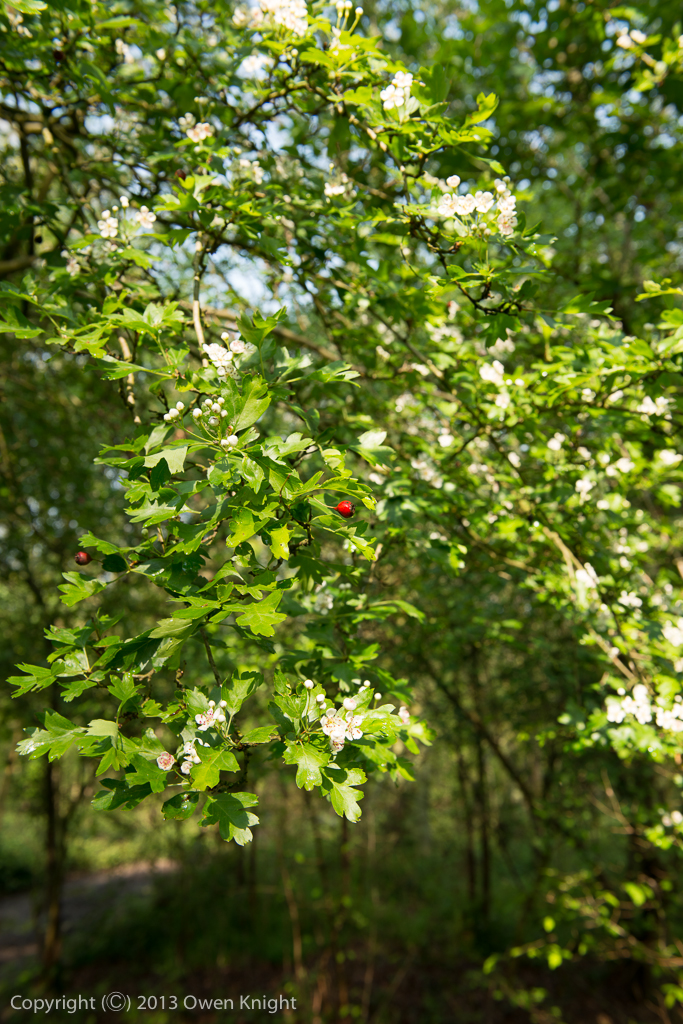April 2014: Blake’s Wood, Essex
I spend a lot of time in the countryside, both in the UK and elsewhere, whether as a holidaying visitor, accompanying my partner, or walking or running. Some plants, trees, birds and animals I can identify and recognise, although not being able to name them does not diminish the pleasure. It seems a good idea to share some of these observations in a new category, ‘A Month in the Country’. The style and level of detail of these posts may vary, as may the country; the intention will be to share each experience in the way I encounter it.
So, to begin with, some images from a walk in Blake’s Wood, Danbury, Essex.
Blake’s Wood is an ancient woodland on a sloping site of 100 acres of clear streams and valleys, covered primarily with oaks, chestnut and coppiced hornbeam. In spring it has one of the most impressive displays of bluebells in the area. It is also notable for the way it has recovered from severe damage in the Great Storm of 1987. Several of these photographs show trees that were blown down over 25 years ago, yet were able to retain a roothold and recover, with their branches taking over the role of trunk.
The density of the bluebells, (English, not the Spanish invaders), fills the woods with their sweet smell. I am sure that bluebells used to flower in May, though April is now definitely their month which, as it nears its end sees them begin to fade for another year.
Campion grows between them, sometimes singly, sometimes in clumps.

As does Greater Stitchwort, although much more densely.
The Lesser Celandine, a member of the buttercup family and unrelated to the Greater Celandine, is one of the first flowers of Spring, traditionally flowering on 21st February and lasting through May. It was one of Wordsworth’s favourite flowers; he wrote three poems describing them.
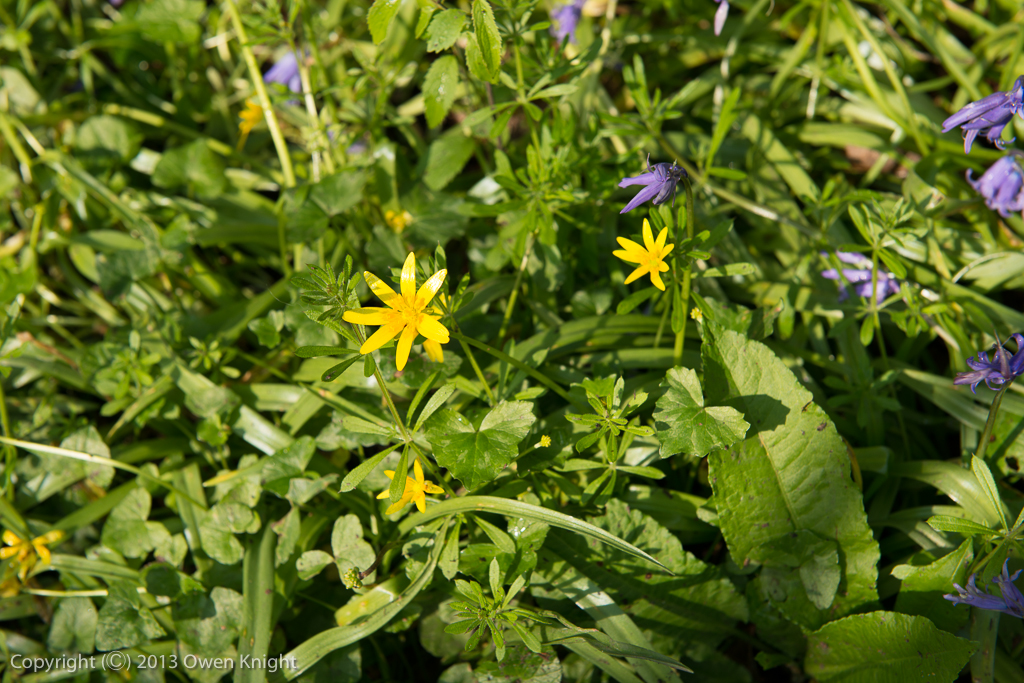
Garlic Mustard, known also as Jack-by-the-Hedge, is a member of the brassica family and can be used in salads.
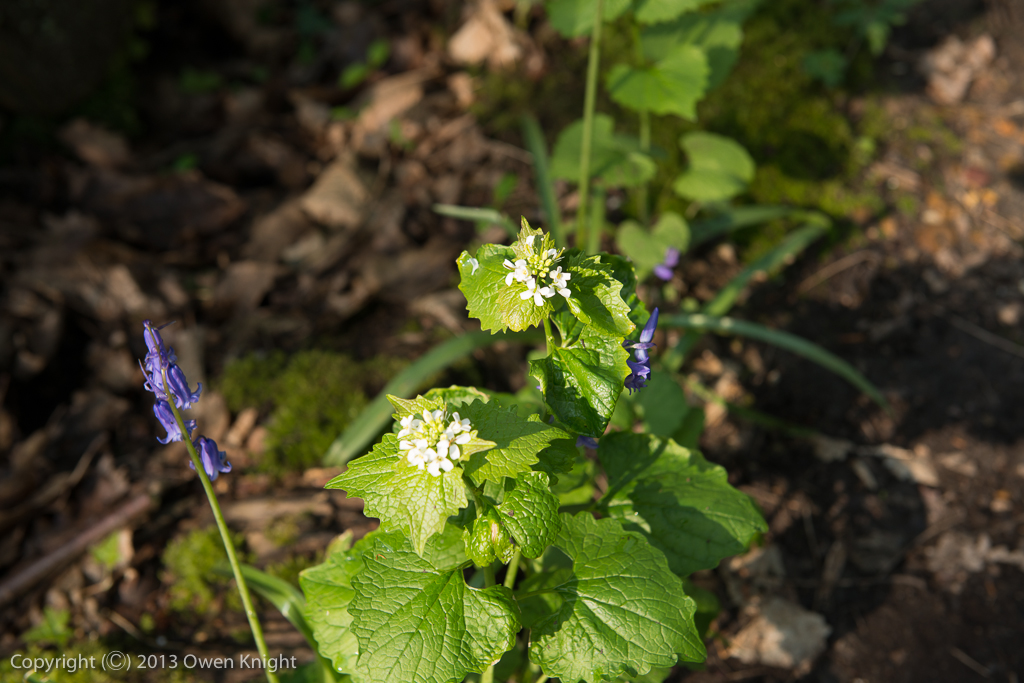
Dog Violets are another companion plant to the bluebell.
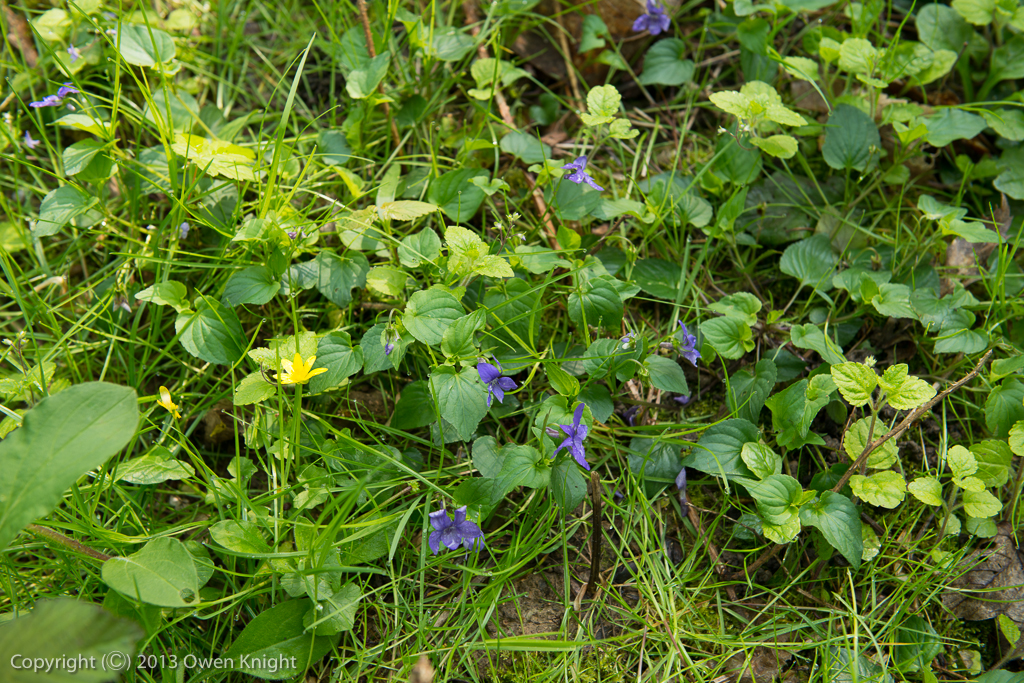
Moss is everywhere, coating the fallen trees and retaining moisture in the the shadier parts where the sun does not shine long. More of moss in a later post.

The Primrose is one of our most recognisable flowers. Natural primroses are so much more attractive than the cultivated ones found in gardens.
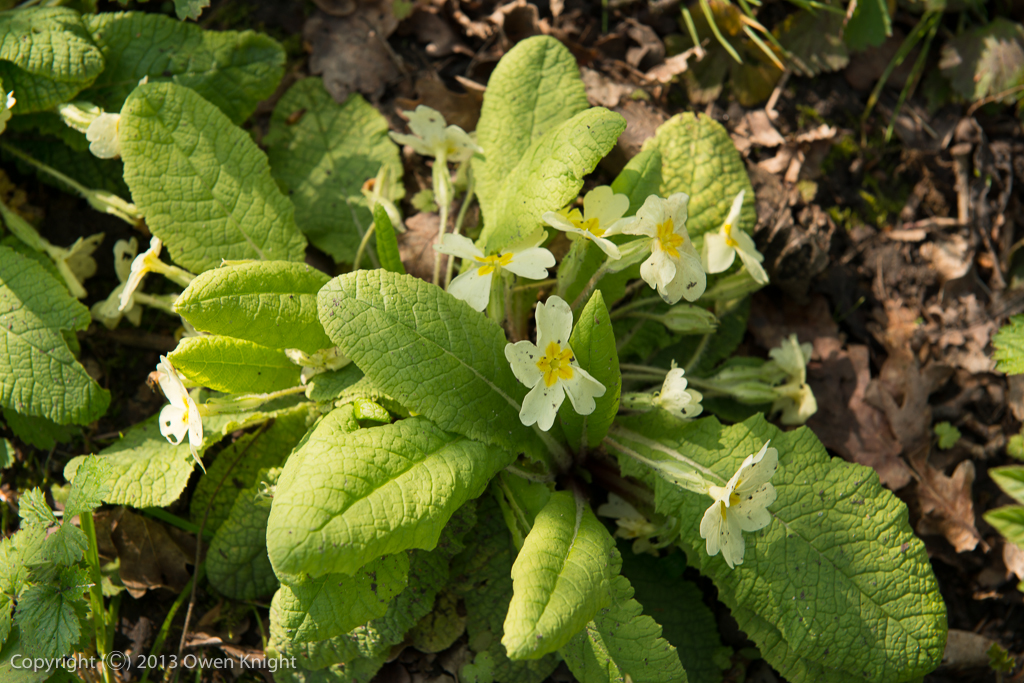
And at the end of the month the Hawthorn comes in to bloom, in time for May, the tree’s alternative name. This tree retains berries from the autumn.
